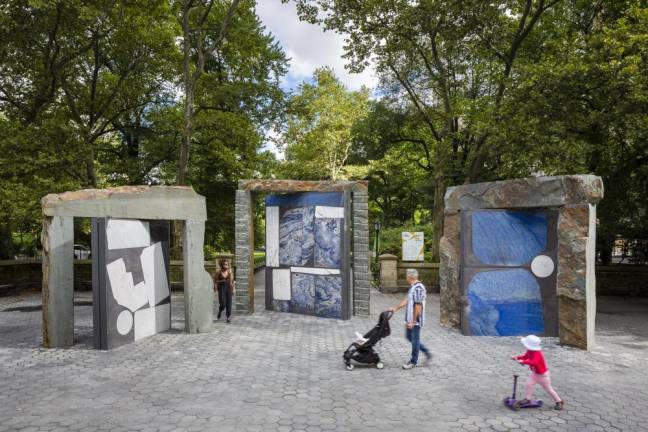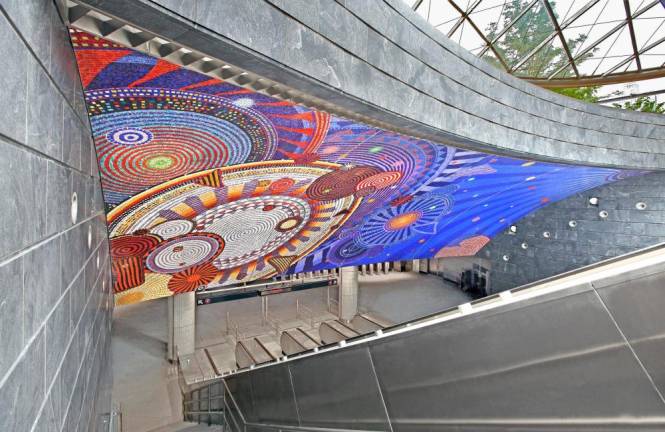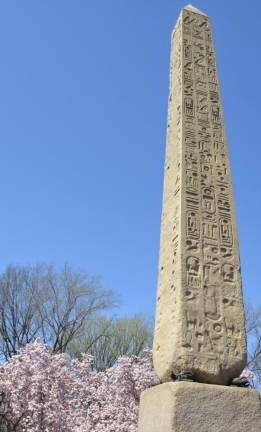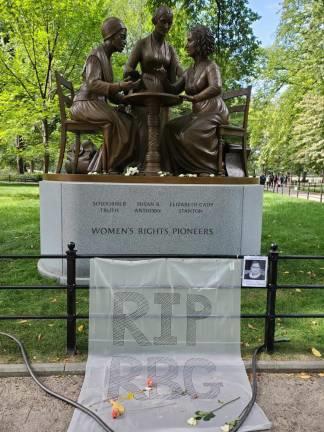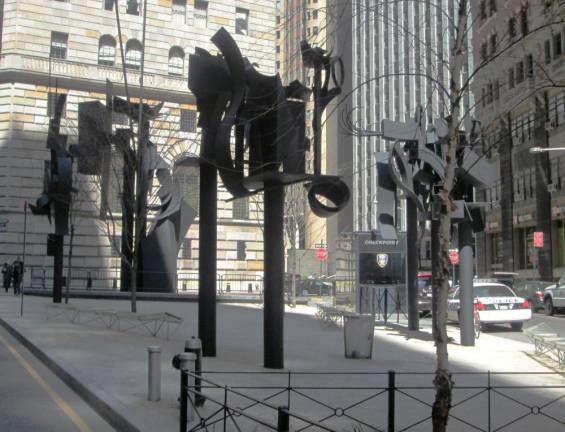Last year, museums, galleries, universities and arts centers around the country announced that 2020 would be a year to celebrate women in the arts. Exhibitions were planned, books were written, works were commissioned, and schedules were planned to commemorate, through the arts, the 100th anniversary of women’s right to vote. And then something happened (we all know what). Schedules were shifted, and exhibitions were canceled or staged in practically empty spaces. What else is new? Women artists have never had it easy.
But New York is its own museum, and public art is all around. So, why not curate your own exhibition to celebrate women artists this year? It’s easier than you think. Start at either end of Manhattan, or stay in Midtown. Focus on the East Side or West. It won’t matter because women’s art is everywhere.
Conceptual artist Jenny Holzer has shared thoughts, challenged assumptions, asked questions, revealed truths, and expressed sorrows in text-based works all over the world. “For 7 World Trade” is a 2006 work installed in the lobby of 7 World Trade Center. A 14-foot high by 65-foot long wall flashes texts chosen by the artist, including poetry by Walt Whitman, Elizabeth Bishop, Allen Ginsberg, William Carlos Williams, and Langston Hughes, as well as recently by New York school kids. Holzer told PBS’s Art21, she wanted it to be “not memorial text but text about the joy of being in New York City.”
Louise Nevelson, a great Grand Dame of the New York art world left her mark and her sculptures in many Manhattan spots. From the group of towering forms that comprise Louise Nevelson Plaza on Maiden Lane, to the spare, sparkling quietude in the Nevelson Chapel on Lexington Avenue, to the monolithic assemblage “Night Presence IV” on the mall at Park Avenue, she continues to bring grace notes to the city. Each site is worth an artistic pilgrimage to visit.
“Funktional Vibrations”
The MTA Arts & Design program has, for decades, ensured that pretty much every rider of public transit in New York will find art along the way. Large or small, tucked away in surprising nooks or bursting beyond architectural constraints and spilling onto the streets, they’ve brought us an unending, ever-changing museum. The Hudson Yards station at 34th Street features a whirling mosaic of kaleidoscopic joy. “Funktional Vibrations” by Xenobia Bailey references traditional textiles, the stars in the sky, music and dance. Bailey’s work is as exciting as any you’ll see in a museum or gallery, and it’s there all the time, just waiting for you to look up in wonder.
The bright red sculpture outside 909 Third Avenue is often mistaken for a Calder, but it’s not. It’s a piece called “Red Flying Group” by Ann Gillen. Though not a household name, Gillen’s added her vision and voice to New York art for decades. She studied at Pratt in the 1950s and later at Columbia, and her work has been exhibited in public spaces like parks, universities and at Lincoln Center, though “Red Flying Group” outside the Post Office on Third and 55th Street might be her most beloved.
“Doors for Doris,” a massive sculpture of three stone portals is currently on view at Doris Freedman Plaza, at the corner of 59th and Fifth. Sam Moyer, the woman who created it, used found and reclaimed stone from sites around the city to draw attention to our built and natural environment and also to the gateways that art presents to other states of mind. She also pays homage to the doors opened by Doris Freedman, creator of the Public Art Fund, and another Grand Dame of New York’s art world. Like these stones, Freedman was foundational to the city’s public art, and her work still supports our arts and artists.
Central Park’s iconic “Angel of the Waters” the sculpture that crowns the Bethesda Fountain was created in 1868 by Emma Stebbins, the first woman to receive a commission for a major work of art in the city. Last August, Meredith Bergmann’s sculpture, “Women’s Rights Pioneers Monument” broke what she called the “bronze ceiling.” It’s the first sculpture in the park that was commissioned to commemorate actual (not idealized or fictional) women. If you want to consider how overdue recognition for women in culture might be, stop by Cleopatra’s Needle behind the Met on your way out of the park. It was built in 1475 BC, and in an early act of curation, relocated to a temple designed by Cleopatra who lived from 69-30 BC, before becoming part of New York’s artistic heritage in the 1880s.
Art has the ability to open eyes, to broaden perspectives, to alter vision, to offer understanding. Women artists have been adding their voices to the rich chorus of life for as long as there has been human life. It’s both long overdue and exactly the right time to take notice and give them their due.
